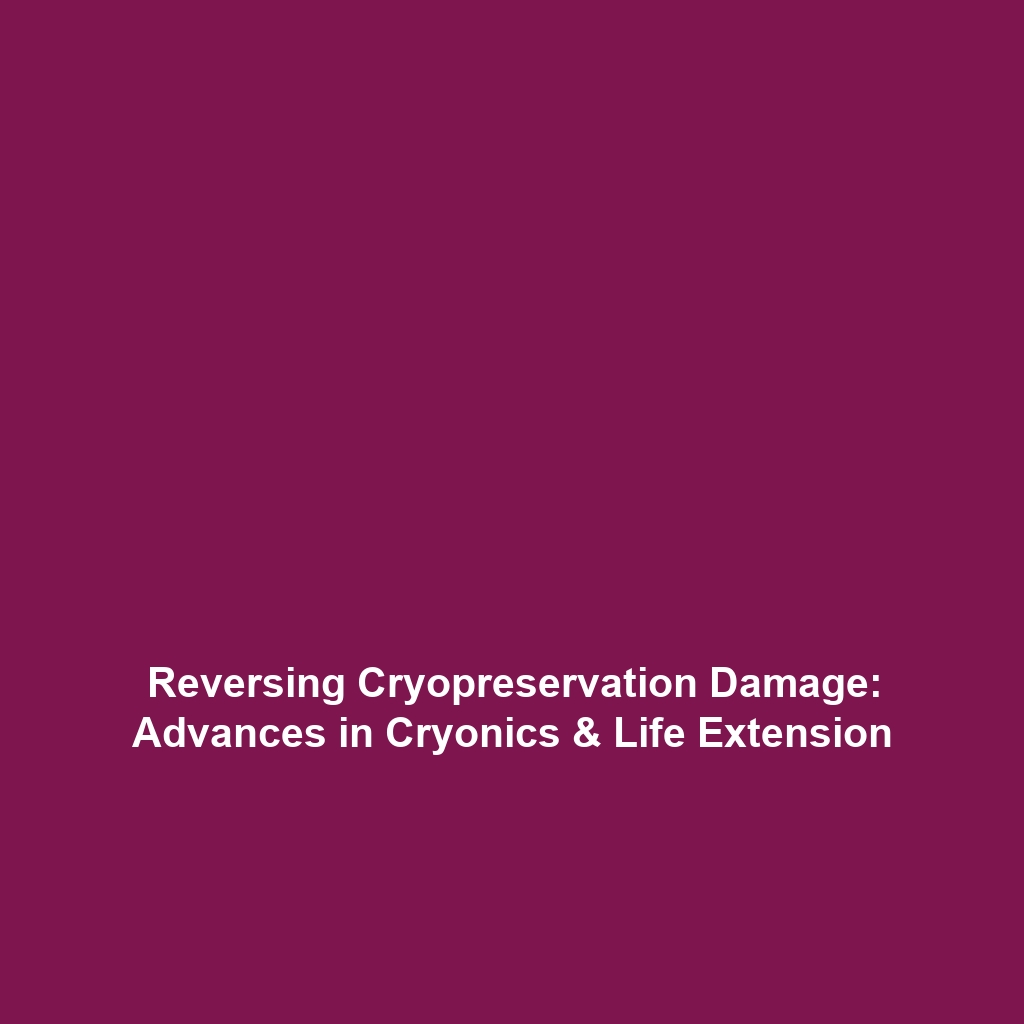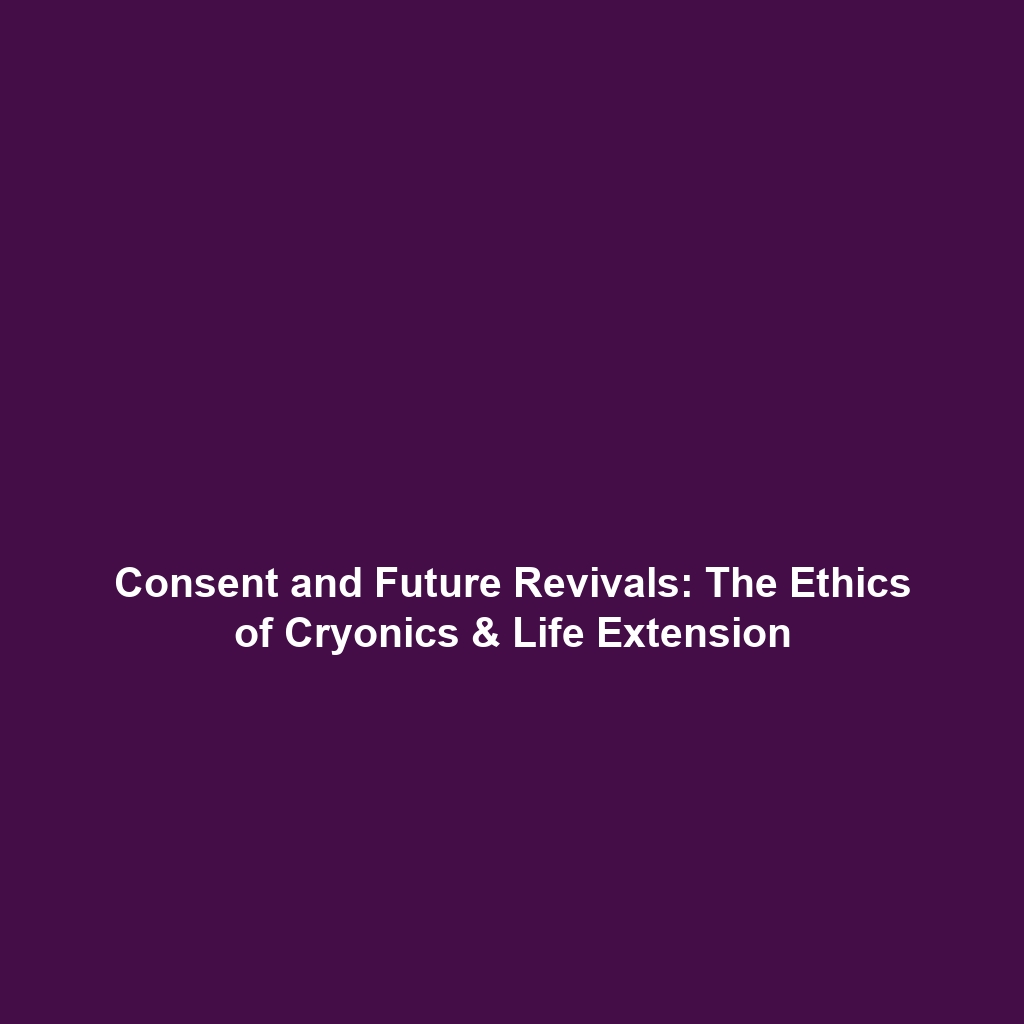Reversing Cryopreservation Damage: A Key to Cryonics & Life Extension
Introduction
Reversing cryopreservation damage is a critical area of study within the fields of cryonics and life extension. As the field of biostasis advances, understanding how to repair or mitigate the damage caused by the cryopreservation process becomes vital for its potential restoration of life. This article delves into the scientific principles underpinning the reversal of cryopreservation damage and outlines its significant implications for the future of human longevity and health.
Key Concepts
To appreciate how reversing cryopreservation damage contributes to cryonics and life extension, it’s essential to understand several key concepts:
1. Cryopreservation Techniques
Cryopreservation involves cooling biological material to -196°C to halt metabolic processes. However, ice crystal formation during this process can disrupt cellular structures, leading to significant damage.
2. Reversal Mechanisms
Research in reversing cryopreservation damage focuses on several mechanisms including:
- Vitrification: A process that turns solutions into a glass-like state, preventing ice formation.
- Optimization of thawing protocols: Developing methods to safely return cells to room temperature without sustaining damage.
- Cellular repair technologies: Employing biochemical approaches to repair damaged cellular components post-thaw.
Applications and Real-World Uses
The applications of reversing cryopreservation damage extend into various realms:
- Organ Preservation: Enhancing the viability of human organs destined for transplantation.
- Animal Conservation: Preserving endangered species by cryopreserving sperm, eggs, and embryos.
- Infertility Treatments: Improving success rates in fertility treatments through better preservation techniques.
These examples illustrate how reversing cryopreservation damage is utilized effectively in the context of cryonics and life extension.
Current Challenges
Despite advancements, there are notable challenges in studying and applying methods to reverse cryopreservation damage:
- Complexity of cellular structures: Each type of cell may react differently to cryopreservation.
- Limited understanding of long-term effects: The full implications of various cryopreservation methods on cell viability are still being investigated.
- Ethical concerns: The implications of cryonics for life extension raise philosophical and ethical questions that require careful consideration.
Future Research and Innovations
Ongoing research into reversing cryopreservation damage promises exciting innovations:
- Nanotechnology: Utilizing nanobots to repair cellular structures at a micro-level.
- Genetic Editing: Exploring CRISPR technology for repairing molecular-level damage.
- Advanced Vitrification Agents: Developing novel cryoprotectants that minimize damage even further.
These innovative approaches could revolutionize the landscape of cryonics and life extension.
Conclusion
Reversing cryopreservation damage is not just a scientific curiosity but a cornerstone of advancements in cryonics and life extension. As researchers continue to refine techniques for minimizing and repairing cryopreservation-induced damage, the potential to enhance human longevity becomes increasingly plausible. For further reading, consider exploring our articles on Cryonics and Life Extension Technologies.





